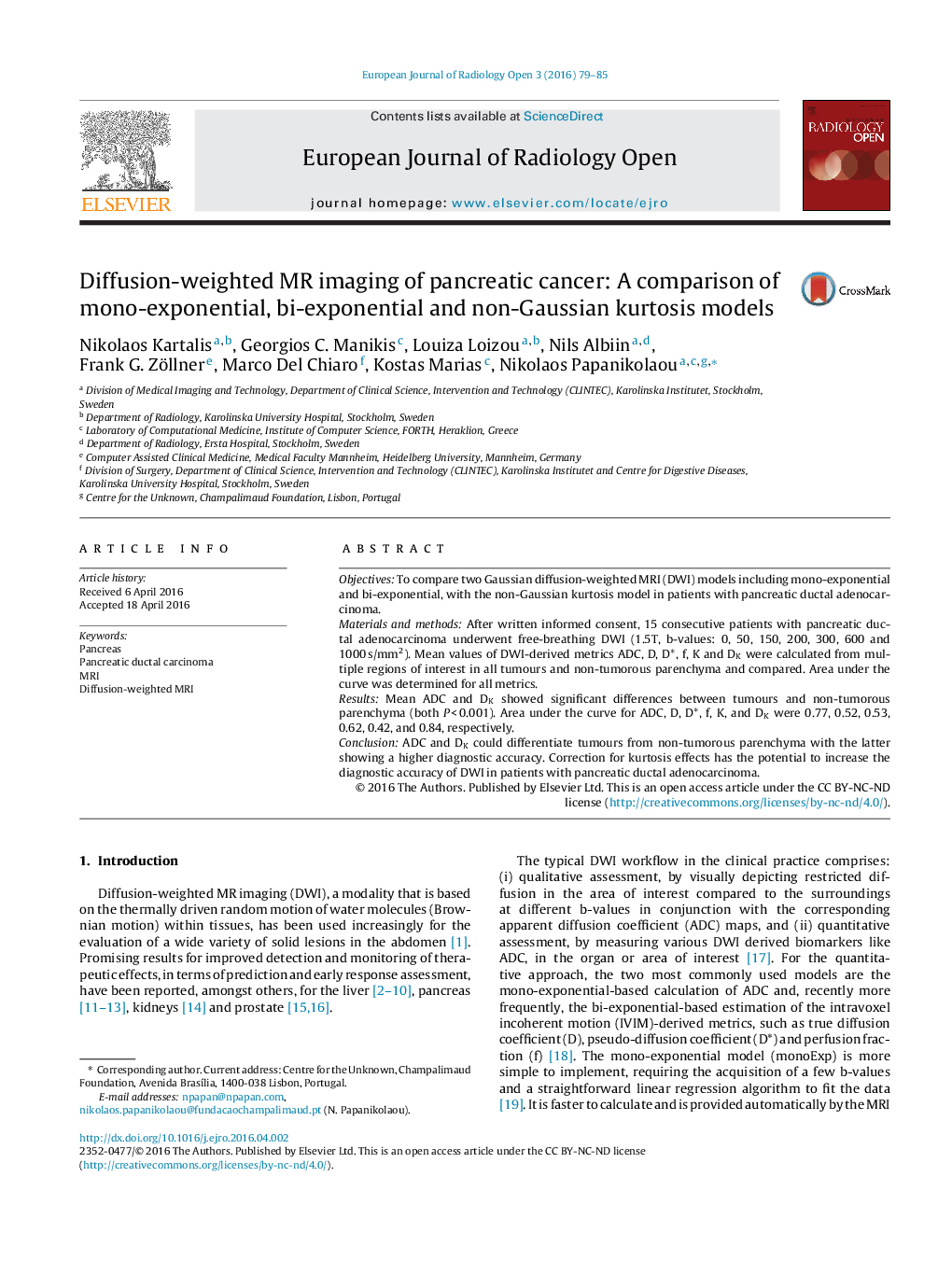| Article ID | Journal | Published Year | Pages | File Type |
|---|---|---|---|---|
| 4229657 | European Journal of Radiology Open | 2016 | 7 Pages |
ObjectivesTo compare two Gaussian diffusion-weighted MRI (DWI) models including mono-exponential and bi-exponential, with the non-Gaussian kurtosis model in patients with pancreatic ductal adenocarcinoma.Materials and methodsAfter written informed consent, 15 consecutive patients with pancreatic ductal adenocarcinoma underwent free-breathing DWI (1.5T, b-values: 0, 50, 150, 200, 300, 600 and 1000 s/mm2). Mean values of DWI-derived metrics ADC, D, D*, f, K and DK were calculated from multiple regions of interest in all tumours and non-tumorous parenchyma and compared. Area under the curve was determined for all metrics.ResultsMean ADC and DK showed significant differences between tumours and non-tumorous parenchyma (both P < 0.001). Area under the curve for ADC, D, D*, f, K, and DK were 0.77, 0.52, 0.53, 0.62, 0.42, and 0.84, respectively.ConclusionADC and DK could differentiate tumours from non-tumorous parenchyma with the latter showing a higher diagnostic accuracy. Correction for kurtosis effects has the potential to increase the diagnostic accuracy of DWI in patients with pancreatic ductal adenocarcinoma.
